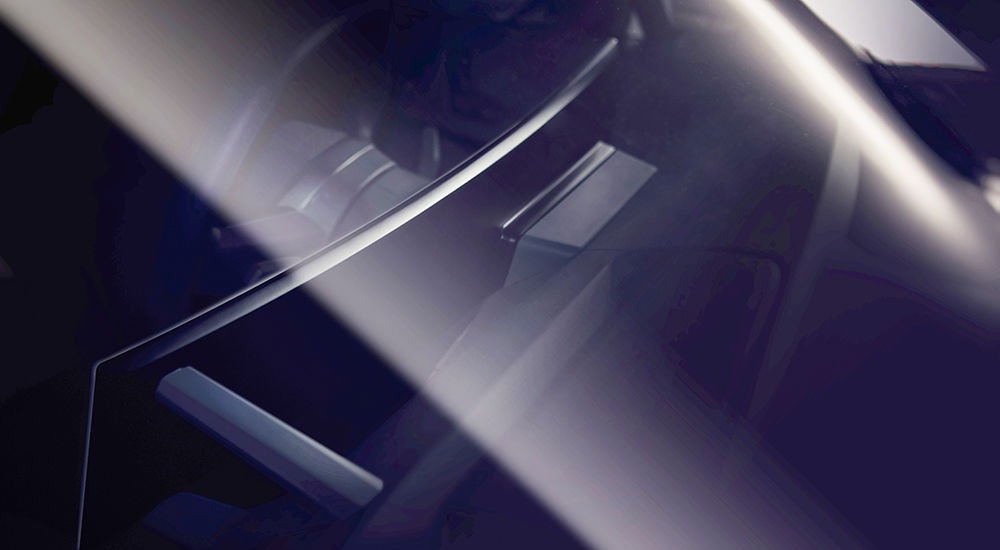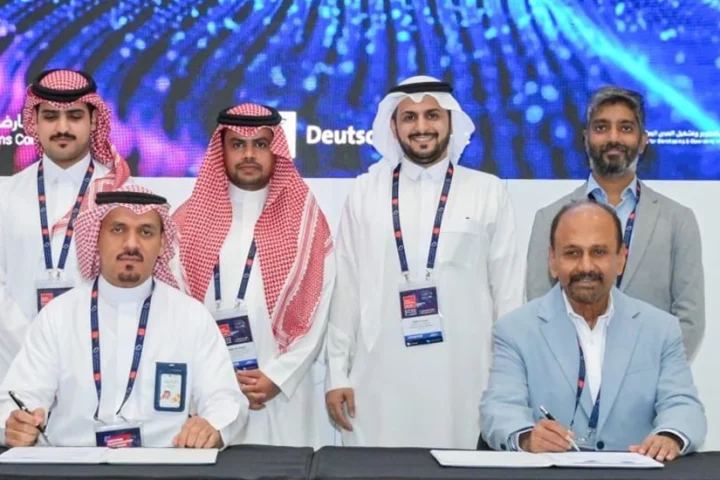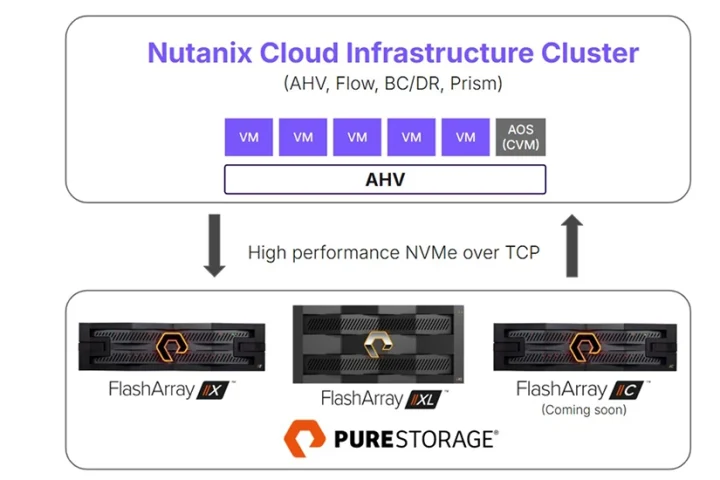The driver-oriented arrangement of display and control elements has been one of the hallmark features of BMW model interiors for decades. The next generation of fully digital display will be seen in the BMW iNEXT, which is due to be produced as the technology flagship from 2021 onwards. In the new curved display featured in the BMW iNEXT, information and control display areas are merged to create a single unit that is curved towards the driver. This integrated unit geared towards the driver optimises the visualisation of information and facilitates intuitive touch control.
The traditional driver orientation of cockpit design was recently optimised further with the current BMW Live Cockpit Professional. Here, the clear structure and uniform presentation of extensively customisable content on the fully digital instrument panel and control display ensure the driver always has the right information at the right time. The next step on from this now follows with the curved display in the BMW iNEXT. It features a curvature that is geared towards the driver. The single-section display surface creates a particularly harmonious effect, lending additional visual emphasis to the ergonomically optimised controls.
The curved display is positioned in such a way that vehicle occupants cannot see its connection to the instrument panel. This means it conveys a particularly striking sense of lightness. The distinctive, high-quality design of the curved display draws its inspiration from modern consumer electronics technology, with the curved display element itself being held in place by an extremely slim magnesium bracket. The sophisticated display technology with non-reflecting glass also does without a hood for shading purposes, thereby giving the cockpit area a particularly tidy and uncongested look.




As such, the shape and arrangement of the curved display represents a ground-breaking interpretation of the driver orientation that is characteristic of BMW. At the same time, the control display area remains clearly visible and accessible to the front passenger, too. Depending on the situation and individual preferences, individual display content items can be shifted back and forth between the control display area in the driver’s direct field of vision and the area that can be used by the front passenger.
The curved display is set in high-quality materials and is virtually freely suspended on the instrument panel. This makes it a key element in terms of the modern, luxurious and generous sense of space in the BMW iNEXT. The curved display in the BMW iNEXT takes us to the next level of driver-oriented controls. The new display unit enables intuitive, natural and ergonomically perfect use of the touch function.
“The curved, single-section display is the central control element and represents the modern interpretation of driver orientation. It occupies a dominant central position in a highly iconic display structure that provides a highly distinctive display experience,” explains Domagoj Dukec, Head of BMW Design.
Key takeaways
- In the curved display information and control areas are merged to create a single unit.
- This unit geared towards the driver optimises visualisation of information and intuitive touch control.
- The traditional cockpit design was recently optimised with the BMW Live Cockpit Professional.
- The single-section display creates a harmonious effect, lending visual emphasis to ergonomically optimised controls.
- The curved display is positioned in such a way that occupants cannot see its connection to the instrument panel.
- The curved display takes us to the next level of driver-oriented controls.
- The new display unit enables intuitive, natural, ergonomic use of the touch function.
Byton’s smart intuitive vehicle
An integrated display console was announced by BYTON for its all-new smart intuitive vehicle. The vehicle made its global debut at the International Consumer Electronics Show 2018. A next-generation smart device, the car is uniquely built for the coming era of truly shared, smart mobility and autonomous driving. BYTON’s smart intuitive vehicle features an all-new design and innovative human vehicle interaction.
Key features include:
Shared experience display
BYTON is equipped with multiple display screens, with the traditional center console replaced by a Shared Experience Display enabling content shown to be shared with other passengers in the car.
Human vehicle interaction
In addition to voice recognition, touch control, biometric identification and necessary physical buttons, the car features proprietary Air Touch sensors, enabling front and rear passengers to control the Shared Experience Display with hand gestures.
BYTON life cloud platform
This platform seamlessly connects a driver’s or passenger’s apps, data, and devices, allowing them to take full advantage of their travel time whether for work or entertainment. BYTON Life also provides personalised services and configurations that are automatically adjusted according to users’ preferences.
BYTON intuitive access
This advanced secure unlocking method uses a facial recognition camera to recognise the driver or passenger to unlock the door.
Digital design
Among other digital design features, unique BYTON Smart Surfaces composed of front and rear LED lights and a luminescent logo can switch to different display modes to suit different driving scenarios.




Expanding range of hybrid vehicles
The BMW Group, a vendor in electromobility, is expanding its range of electrified vehicles. Within two years, the company will offer five fully-electric series-production vehicles: Alongside the BMW i3, with more than 150,000 units built to date, this year will see the start of production of the fully electric MINI at Plant Oxford UK. This will be followed in 2020 by the fully-electric BMW iX3 from Shenyang China and in 2021 by the BMW iNEXT, which will be produced in Dingolfing Germany, and the BMW i4 from Plant Munich Germany.
Including its extensive fleet of plug-in hybrids, the BMW Group has the widest range of electrified vehicles on the market. Updated, extended electric-range plug-in-hybrid versions of the BMW 3 Series, BMW 7 Series and BMW X5 alongside the new BMW X3 plug-in hybrid were presented at this year’s Geneva Motor Show. A few weeks later, the updated plug-in hybrid variant of the BMW X1 Long Wheelbase Version, which is produced locally for the Chinese market, was shown at the Shanghai Auto Show. This diversity of electrified drive concepts underlines the importance of technology openness on the road to sustainable mobility.
The BMW Group will launch more than ten fully-electric and plug-in hybrid models onto the market by the end of next year, either completely new or updated models with the fourth-generation Gen 4 of the company’s electrified drive train technology. By 2025, the BMW Group will offer at least 25 electrified models – half of them fully-electric.
The BMW Group has always promoted emission-free mobility and advocated for its effective support. However the demands of future mobility will be multifaceted. There will not be just one single solution that meets the mobility needs of all customers around the world. People living in rural areas, for instance, need different technological solutions for mobility than those in cities.
The effective role plug-in hybrids can play in achieving emission-free mobility in cities is demonstrated by the example from the Netherlands: In conjunction with the City of Rotterdam, the BMW Group has implemented a pilot project to increase the use of electric power by plug-in hybrids in the city. Preliminary results indicate that participating customers drove over 90% in electric mode in a specially defined e-zone within Rotterdam.
This underlines the fact that plug-in hybrids are both an important building block in ramping up e-mobility and a long-term requirement for customers who depend on flexibility. For this reason, the BMW Group has a strong interest in influencing user behaviour to increase the percentage of miles driven with electric power.
“Our market is global. We do not want to tell people what to do; we want our products to inspire people all over the world. Our flexible electrification strategy underlines this approach and enables us to serve very different regions of the world, as the introduction of alternative drive trains is proceeding at a different pace in different markets,” emphasised Harald Krüger, Chairman of the Board of Management of BMW AG. “Technological openness is key to being prepared for the regulatory requirements and customer wishes in different markets,” he added.
“Technology openness also means continuing to improve our already efficient combustion engines. We are systematically driving e-mobility with both fully-electric vehicles and plug-in hybrids, and investing in new technologies such as fuel cells. We believe it would be a mistake to rely on just one technology, as that could jeopardise prosperity in Germany,” said Krüger.
“We all have a responsibility to ensure a world worth living in for our children. We are bringing the right products to achieve this onto the market and have set ourselves the goal of purchasing electricity for our locations worldwide exclusively from renewable sources from 2020. By 2020, we also aim to have reduced the CO2 emissions of our new vehicle fleet in Europe by at least 50% compared to 1995 levels. By the end of 2018, we had already achieved 42%.”
With its four brands BMW, MINI, Rolls-Royce and BMW Motorrad, the BMW Group is the world’s leading premium manufacturer of automobiles and motorcycles and also provides premium financial and mobility services. The BMW Group production network comprises 30 production and assembly facilities in 14 countries; the company has a global sales network in more than 140 countries. In 2018, the BMW Group sold over 2,490,000 passenger vehicles and more than 165,000 motorcycles worldwide.

Key takeaways
Strategy
- BMW Group believes in technology openness for e-mobility.
- Technology openness also means continuing to improve already efficient combustion engines.
- BMW is driving e-mobility with both fully-electric vehicles and plug-in hybrids.
- By 2020, BMW aims to reduce CO2 emissions of its new vehicle in Europe by at least 50% compared to 1995 levels.
- BMW has an interest in influencing user behaviour to increase the percentage of miles driven with electric power.
Execution
- BMW will launch more than ten fully-electric and plug-in hybrid models into the market by end next year.
- BMW vehicles will use Gen 4 of the company’s electrified drive train technology.
- By 2025, the BMW Group will offer at least 25 electrified models, half of them fully-electric.
- People living in rural areas, need different technological solutions for mobility than those in cities.
Cash
- BMW will use 100% renewable energy for all manufacturing sites from 2020.
- In 2018, BMW sold over 2,490,000 passenger vehicles and more than 165,000 motorcycles worldwide.



















